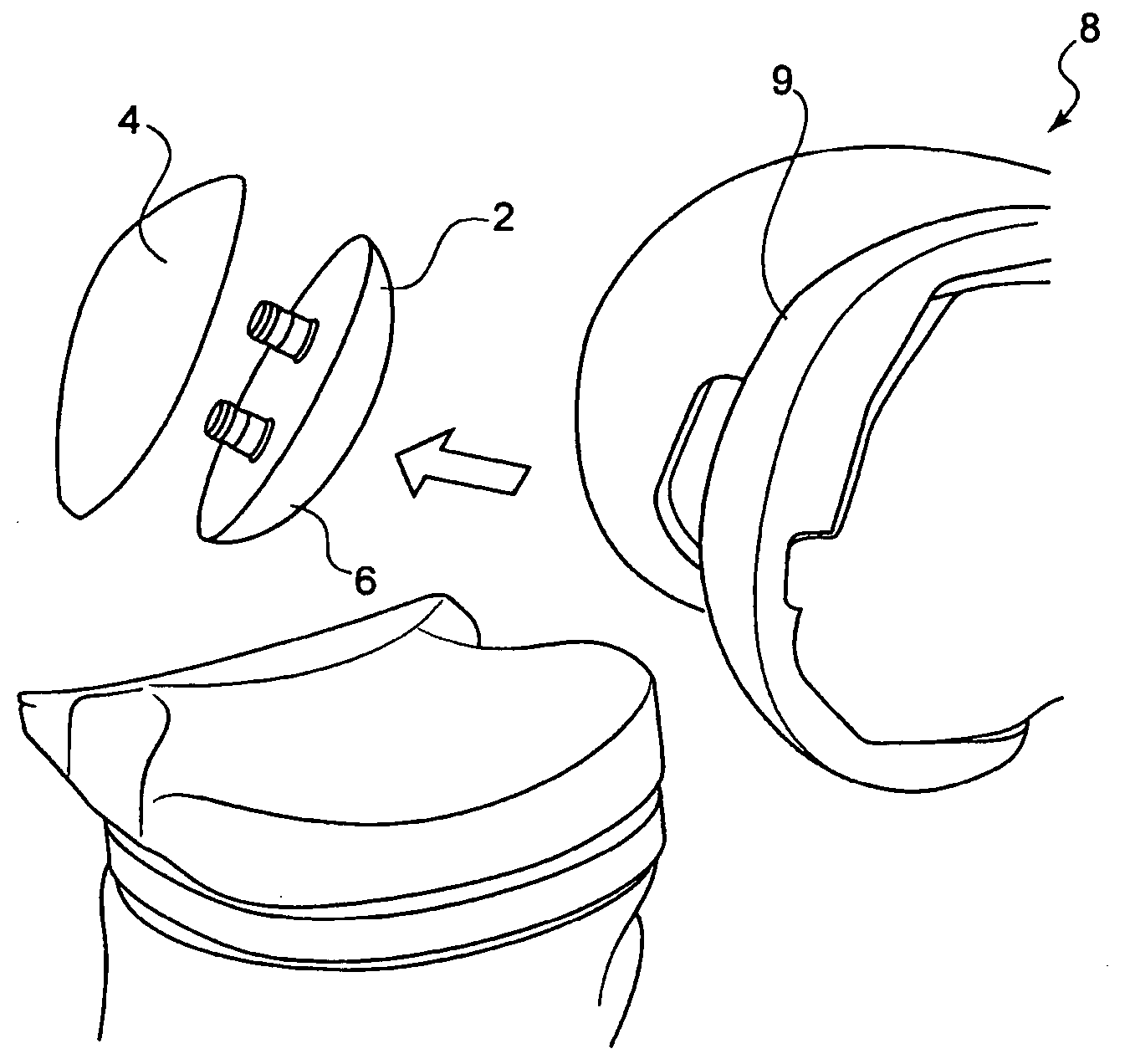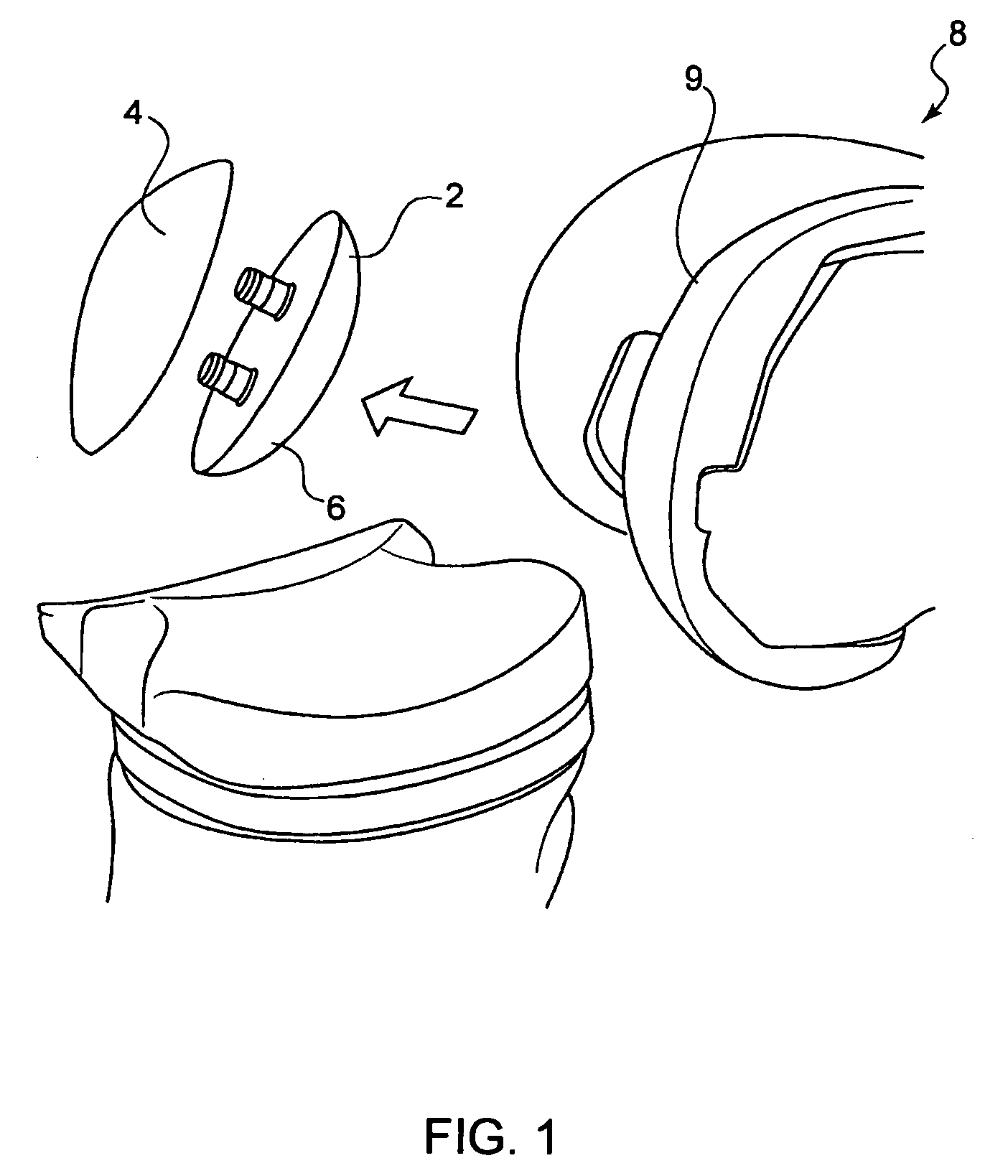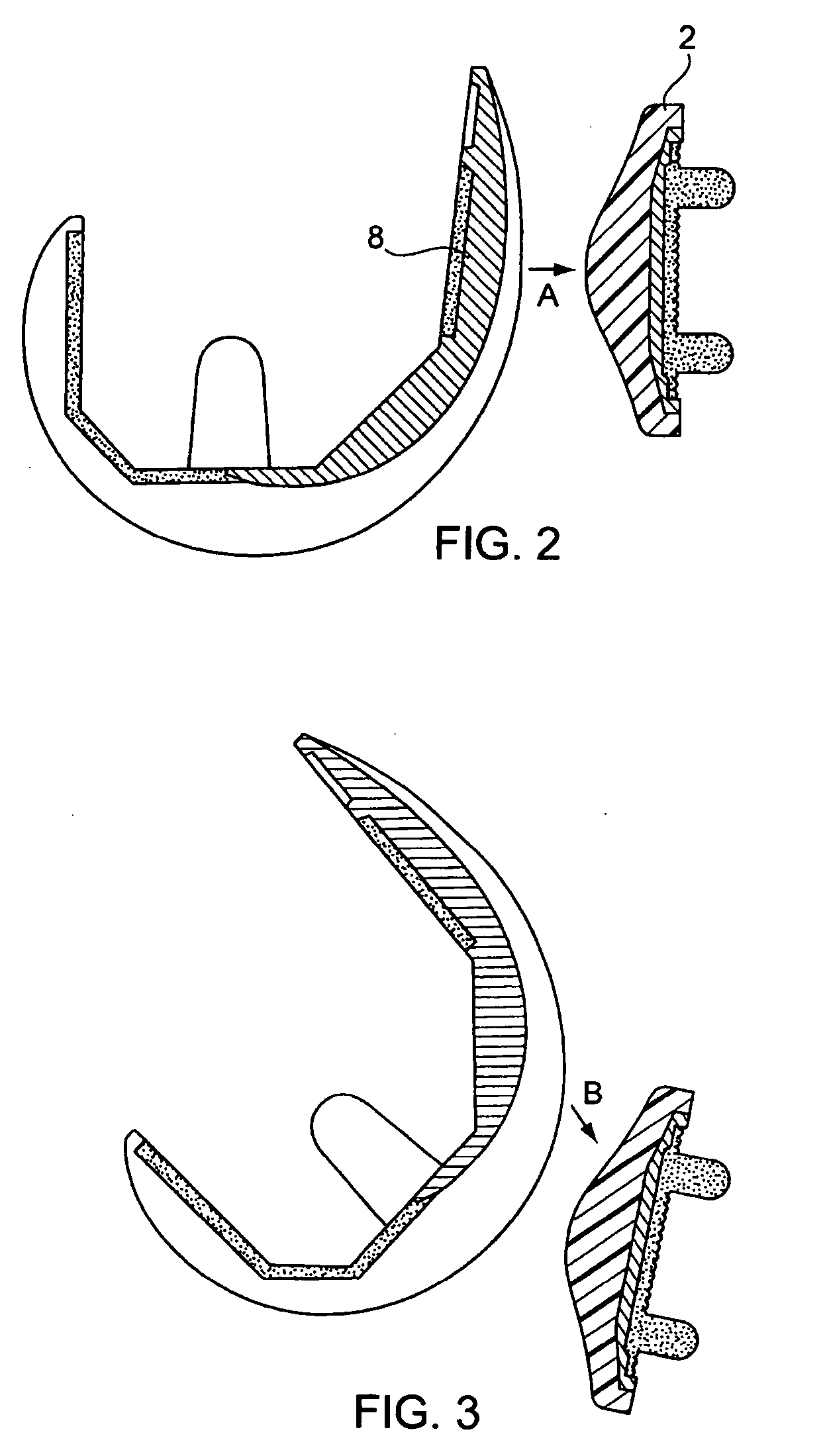Patellar Components
a technology of patellar components and components, applied in the field of patellar components, can solve the problems of increasing the pain of patients, weakening and breaking of the pegs that extend from the patellar component and attach the component to the natural patella, and affecting the patient's comfort, so as to reduce or minimize the shear force, reduce the pain of the anterior knee, and reduce the effect of implantation error
- Summary
- Abstract
- Description
- Claims
- Application Information
AI Technical Summary
Benefits of technology
Problems solved by technology
Method used
Image
Examples
Embodiment Construction
[0081]Embodiments of the present invention provide patellar prostheses that are designed to form a patella portion that replaces a part of a natural patella. The embodiments may decrease the shear force that is experienced by traditional dome-shaped patellar components, while also providing ease of implantation and accommodating a range of surgical error.
[0082]In order to reduce component / bone interface shear forces, which can be a source of pain and component failure, the ideal articular surface for a patellar component has a substantially flat profile. However, in order to increase contact area for better durability, the ideal articular surface substantially matches the coronal and sagittal profile of the trochlear groove of the femoral component. Finally, in order to allow for rotational laxity (surgical error), the ideal articular surface is axis-symmetric (like the button or circular patellar components discussed above). Embodiments of the patellar components described are an a...
PUM
 Login to View More
Login to View More Abstract
Description
Claims
Application Information
 Login to View More
Login to View More - R&D
- Intellectual Property
- Life Sciences
- Materials
- Tech Scout
- Unparalleled Data Quality
- Higher Quality Content
- 60% Fewer Hallucinations
Browse by: Latest US Patents, China's latest patents, Technical Efficacy Thesaurus, Application Domain, Technology Topic, Popular Technical Reports.
© 2025 PatSnap. All rights reserved.Legal|Privacy policy|Modern Slavery Act Transparency Statement|Sitemap|About US| Contact US: help@patsnap.com



